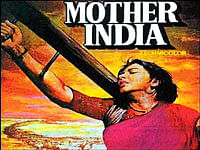
While delving upon the portrayal of women in Indian cinema, Shoma A Chatterji observed, “Myth in Indian cinema, in the mainstream and often, in its parallel counterpart, has not been able to perform the idealistic cinematic function of the myth. It has been used as the basis of cinema’s female characters, and thereby, has been sought to be used successfully in displacing realism with various degrees of the abstract, the absurd and the fantastic. In so doing, Hindi cinema has served to reinforce mythical stereotypes in modern clothing.” Thereby lies the dichotomy, and the anomaly.
Banishing stereotypes
Searching for stereotypes, both in traditional and modern clothing, brings about its own truths. Cinema has a certain role to perform but it cannot perform that role in a vacuum, without support, without patronage, and without wide participation because it involves huge finances. And that, perhaps, is the reason why experimental and non-mainstream cinema has had limited success across the globe. Instead of getting into this greasy area, let’s recall some of Hindi cinema’s exceptional performances, and performers.
Nargis’s role in Mother India is a celebration of Indian womanhood, both as a wife and mother. It is also a celebration of human values in the sense that she refuses to succumb to social pressures. She is a doting mother but assumes the form of Durga and does not hesitate to shoot her son to prevent a wrong being done to another woman. That’s perhaps why it became Nargis’s most celebrated role, though she excelled in many other roles as well. Nirupa Roy’s portrayal of the mother in Deewar too had been exceptional but recounting such portrayals would be a distraction as the role falls in the category of character artistes.
Meena Kumari in Pakeezah, on the other hand, presents a contrasting picture of Indian womanhood. An embodiment of the suffering tragedienne Indian woman, her personal life being the textbook she excelled in film after film, notably Sharda, Sahib Bibi aur Ghulam, Dil Ek Mandir, Dil Apna aur Preet Parai, Bahu Begum and several others. There was a certain naturalness in her performances. Nutan in Seema, Sujata, Bandini, etc brought another dimension to her characters, which was a shade different from other actresses.
Aandhi dealt not only with the theme of incompatibility between couples but also how ambition and a career were extremely important for the female protagonist, played brilliantly by Suchitra Sen. Her character had to choose between duty and freedom, which she portrayed realistically. She also excelled in the double role of mother-daughter in Mamta.
Sharmila Tagore, another talented actress, did give some memorable performances, like in the Gulzar-directed Mausam. But she never really got a challenging role to showcase her histrionics, unlike her peers and contemporaries.
In Hrishikesh Mukherjee’s Abhimaan, Jaya Bhaduri gave a brilliant performance as the ambitionless wife egged on by a celebrity husband into a career option in which she outshines him. There are other shining examples that prove that the Hindi film industry had exceptional talent when it came to actresses — Waheeda Rahman in Chaudhvin Ka Chand, and even Guide to a certain extent, Rekha in Muzaffar Ali’s Umrao Jaan and Basu Bhattacharya’s Aastha, Madhubala in Mughal-e-Azam, Dimple in Rudali, Madhuri Dixit leading the women’s rebellion in Mrityudand (somewhat like Smita in the climatic scene in Mirch Masala), Tabu in Astitva, Deepa Sahi in Maya Memsaab (the role that showcased the most liberated woman Bollywood has ever witnessed), and Meenakshi Sheshadri as a crusader for the rights for a gang-rape victim in Damini.
In one’s reckoning, Smita Patil was, perhaps, the most accomplished actress of Hindi cinema. Her oeuvre is outstanding, investing almost every portrayal with a powerhouse realistic performance. Look at the range of her performances from art house cinema to mainstream films — Subah, Bhumika, Mirch Masala, Ardh Satya, Giddh, Chakra, Bazaar, Shakti. Even in Arth, she had a secondary role compared to bête noire Shabana Azmi, but she wasn’t overshadowed by her co-star’s performance. Shabana Azmi is another fine actress, invariably lost her way traversing the thin dividing line between the parallel and the unparallel posts so perfectly stationed in Bollywood.
Not given their due
Despite having such a large pool of talent, by and large, mainstream Hindi cinema has never given heroines the recognition they deserve. They are always portrayed as the supporting factors, whether as friends, wives, sisters or mothers. The industry has also thrived on presenting the heroine both as the willing or unwilling victim of sexual gratification. The male actor has hardly played second fiddle to his female counterpart even in so-called women-centric films.
It has been said apologetically by Chatterji elsewhere that “the absence of a coherent body of film theory on Indian cinema, let alone a feminist critique, any attempt to explore and analyse the portrayal of women in Indian cinema is fraught with problems. Not the least of which is the tendency to rely on Western constructs of feminist film criticism.”
True, in the highly competitive world of mainstream cinema across the globe, women have managed limited options to correct the perspective. But unfortunately, while the focus in western cinema has again been on the physical, even while pretending to explore relationships from a female perspective, in mainstream Hindi cinema, almost all women filmmakers (with the possible exception of Aparna Sen to a certain degree) have failed their own gender — from the likes of Sai Paranjpe to the present young crop, including Meghana Gulzar.